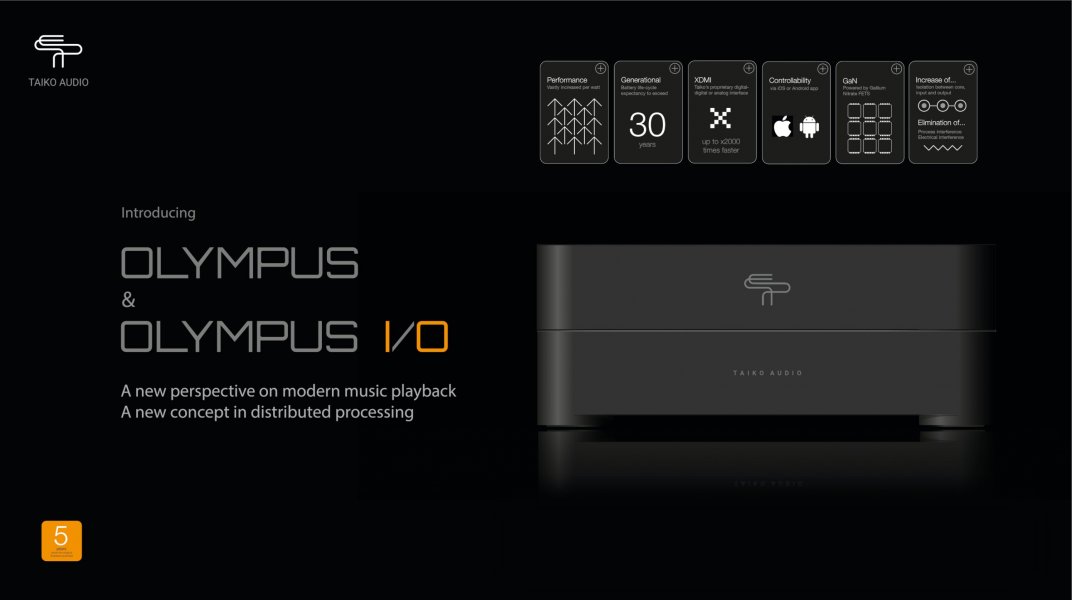About the Olympus design change:
As mentioned earlier in this thread we ended up having 2 Olympus designs.
The original design is already about a year old and was based on an AMD Epyc 32-core CPU with an Asrockrack or Supermicro motherboard (server motherboards are generally based on the same reference design with mainly differences in I/O options offered, networking, storage functionality etc).
We completed and introduced this design to the world in December.
Warning, NERD talk ahead:
As part of my general interest in computer hardware I tend to order every major new CPU / motherboard release to test it's effects on sound quality. Asus announced one of, if not the, most monstrous motherboard ever created in October which I ordered together with its accompanying AMD Threadripper CPU, which is more or less the same CPU as the Epyc, but for the HEDT (High-End Desktop) market. This set new world records of performance with insane power consumptions, like between 1 and 2 Kilowatts (!) of peak power. I more or less forgot all about this but it arrived halfway of January. So we hooked it up, oh my, a true monster indeed, renamed it to FET RIPPER due to it's insane transient current draws on initial boot, we're talking fast repetitive 30-40A spikes, enough to turn most FETs into charcoal. To power this beast with a linear power supply is absolutely challenging, BUT, we have battery supplies which can supply up to 2000A current peaks! Now due to the enormous amount of power consumption it would deplete a battery supply very quickly, within minutes, so I configured a BPS to charge continuously, the BPS doesn't blink at those transients, so we could boot and have a listen.
I basically copied the Olympus design and just exchanged the Motherboard/CPU and it's accompanying power supply. Well of course it didn't sound as good as the already completed Olympus design, BUT, it had the upper bass/midrange density of the Extreme's motherboard/CPUs. I wrote about this before how the Extreme's motherboard/CPUs have this unique density quality no other motherboard/CPU combination has, and rest assured I've tested virtually everything. So this appears to have something to do with Asus's HEDT/Workstation motherboard designs. (It's not present in the Asus motherboards I tested with AMD Ryzen and Intel consumer level chips, so this appears to be something exclusive to their High-end motherboard designs).
Intrigued by this midrange density feature me and Jeroen started tweaking it a bit in our spare time, just for fun, to see if we could achieve the overall performance of the original Olympus design which was on another level in transparency, sound staging, holography, micro detail retrieval and realism. It was actually very far behind so we did not expect to actually get there, but it was a fun spare time project to "tame the beast"! Besides that it would never fit in any reasonably sized chassis, the motherboard was physically larger, required a 4th BPS and a more elaborate cooling solution..
While studying the motherboard architecture we noticed a distinct difference with other motherboards, it's designed to be powered by multiple power supplies to be able to provide the unwieldy power it can consume. It has 2 separate power planes to feed the FET ripper CPU, and another for the PCIe slots(!). With our original Olympus design we deliberately had 4 "grounds" to isolate devices from each other (motherboard/CPU, Network card, Drives and XDMI. 1 ground in the linear power supply, and 3 battery grounds). We then changed the whole system setup to use a hybrid parallel / star ground arrangement using 2 (battery) grounds, minimizing ground current loops resulting in overall better performance (!) while halving the number of battery supplies used. Now it really started to sing AND it would actually fit it into the Olympus chassis! By now we were halfway into February and facing a dilemma, we have 2 Olympus servers, and one of them actually sounds better with by now not only an increase in midrange density and colour palette, but also a significant increase in both micro as macro dynamics. So we pulled the trigger and ordered everything we need to switch over to this design, we did waste some resources on this move, but.. it's just even more "awesome", what can you do? We need to launch the best we can do, even if just for my peace of mind.
In a nutshell this leads to the following changes in the Olympus design:
1) AMD Epyc 32-core -> AMD Threadripper 24-core (86.4 GHz to 100.8 GHz total base clock)
2) 128Gb memory -> 64Gb memory
3) 3*BPS -> 2*BPS
4) 1*LPS + 1* charger PS -> 1* monster charger PS
5) 4* Regulator -> 8* Regulator
6) Larger / more sophisticated heatsink design
7) Even better sound
This is the Olympus as displayed at the Munich show. Functionally there's no difference, it only changes the specs list!



